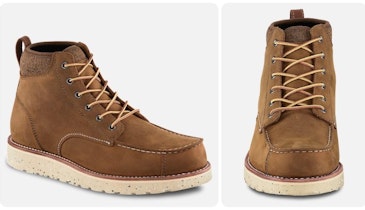My first post of this three-part series, "Buying A Suppressor Isn't As Hard As You Think," defined what it means to “hunt suppressed.” It’s like the introductory section of an instructional manual (except this manual is super interesting, not dry and dull like most manuals) for potentially purchasing a suppressor.
It also validates what’s quickly becoming “a thing.” Suppressors are hot. And with that in mind, here's a list of things to consider before taking the next step toward purchasing a suppressor.
Point-of-Impact Shift:
If your rifle is sighted in unsuppressed, chances are the bullet will impact the target in a different spot when shooting suppressed. The good news is it will group in that same spot. Be sure to sight-in your hunting rifle with the same bullet you’ll be hunting with and with the suppressor attached.
Get The Right Caliber Suppressor:
You can buy one suppressor and use it on multiple rifles. Choose a suppressor with the diameter of the largest bullet that you’ll be firing through it. I purchased a Thunder Beast Arms Ultra 9 suppressor in 2015 to go on my 6.8 SPC rifle, my .223 Wylde and a 300 BLK rifle. So I chose the .30-caliber Ultra 9 that would accommodate my .30-caliber bullets all the way to down to .223-diameter bullets.
Another thing to consider if you want to swap your suppressor between two or more rifles, is that you can add a quick-connect brake to all your rifle barrels. This will allow you to remove the suppressor faster and without damaging barrel threads when swapping the suppressor among rifles.
Threaded Barrel:
If you’re looking to outfit your favorite bolt-rifle with a suppressor, then you’re going to need a threaded barrel for it. I purchased an aftermarket Green Mountain Rifle barrel for my Ruger 10/22 that I squirrel hunt suppressed with, and I selected a .223 Wylde barrel to replace my factory unthreaded .223 barrel. Not only are these barrels economical in price, but they are tack drivers, too. Rimfire thread specs are typically ½x28 and centerfire barrels usually get 5/8x24 threading. There are other thread specs, too, so be sure to match the one on your barrel.
Subsonic Shooting:
As I mentioned earlier, you can shoot quietly once the sonic crack is removed from the equation. There are a number of ammo manufacturers who sell subsonic rounds, even in larger deer calibers. One of the most popular subsonic chamberings is the 300 BLK. This .30-caliber bullet is popular in the AR-15 platform or in bolt-action rifles. When loaded with a 200- to 240-grain bullet muzzle velocities are around 1,000 fps, which is slower than the speed of sound. In fact, the impact of the 220-grain bullet on target is louder than the report of the rifle. After all, the bullet still hits with close to 1,000 ft./lbs. of energy. Search online for subsonic rounds in .308 and many other popular calibers. Of course, if you’re a reloader, then you can make your own sub-sonic rounds.
A subsonic .30-caliber round is designed for use inside of 100 yards. Beyond 100 yards the bullet drop is drastic. I have an Odin Works 300 BLK stainless steel barrel on an AR-15 that shoots sub-MOA groups at 50 and 75 yards, all with the same shot signature as a pellet rifle. It’s the perfect weapon for doe removal on food plots. The quiet shot doesn’t spook surrounding deer, so you still have a shot at a big buck or other does. We also practice predator control on our hunting ground, so I use my 300 BLK to dispatch coyotes during my deer hunts without ruining the hunt.
Gun Trust:
Because suppressors are Class III firearms, only the registered tax stamp holder can use or have in possession the suppressor designated to that stamp. An NFA Gun Trust, is a legally binding trust that allows you to place your suppressor in it, so that its members can possess and use the Class III item. It’s a great way to pass down a suppressor to your child one day, or allow family members to legally use a suppressor. You can add and remove trustees at any time, too. Otherwise, your child or whoever inherits your suppressor will have to pay the Government $200 to legally transfer the item. There are a number of websites that offer 50-state legal NFA Gun Trusts for around $120. Check out www.silencershop.com to learn how to set up a gun trust.
Bonus: There’s a Kiosk For That
So about Silencer Shop. It’s an Austin, Texas-based company that specializes in suppressor ownership. While these guys don’t make the suppressors, they’ve deployed smart-phone apps and in-store Kiosks to streamline the purchasing process. It’s quite possible to fill out all the appropriate paper work, register fingerprints and upload a selfie picture in about 10 minutes.
If you’d like more detail on the full process and each step the kiosk walks its customer through, here’s the instructions as listed on Silencer Shop’s website:
- Locate kiosk within designated dealer’s storefront
- Tap touchscreen to begin process (select preferred account log-in option)
- Scan your assigned Quick Response (QR) code
- Follow onscreen prompts/instructions
- Submit fingerprints for upload (left four fingers; left thumb; right thumb; right four fingers)
- Supply signature with finger
- Provide registration information
- Answer questionnaire
- Choose registration method (e.g., trust, corporation, or individual)
- Download mobile app for photo
- Complete process
- Check text messages/emails for account links and alerts
- Treat yourself to ice-cream (and ammunition)
This is the second post of a three-part series originally featured in Whitetail Journal magazine. Look for the third post next week.







